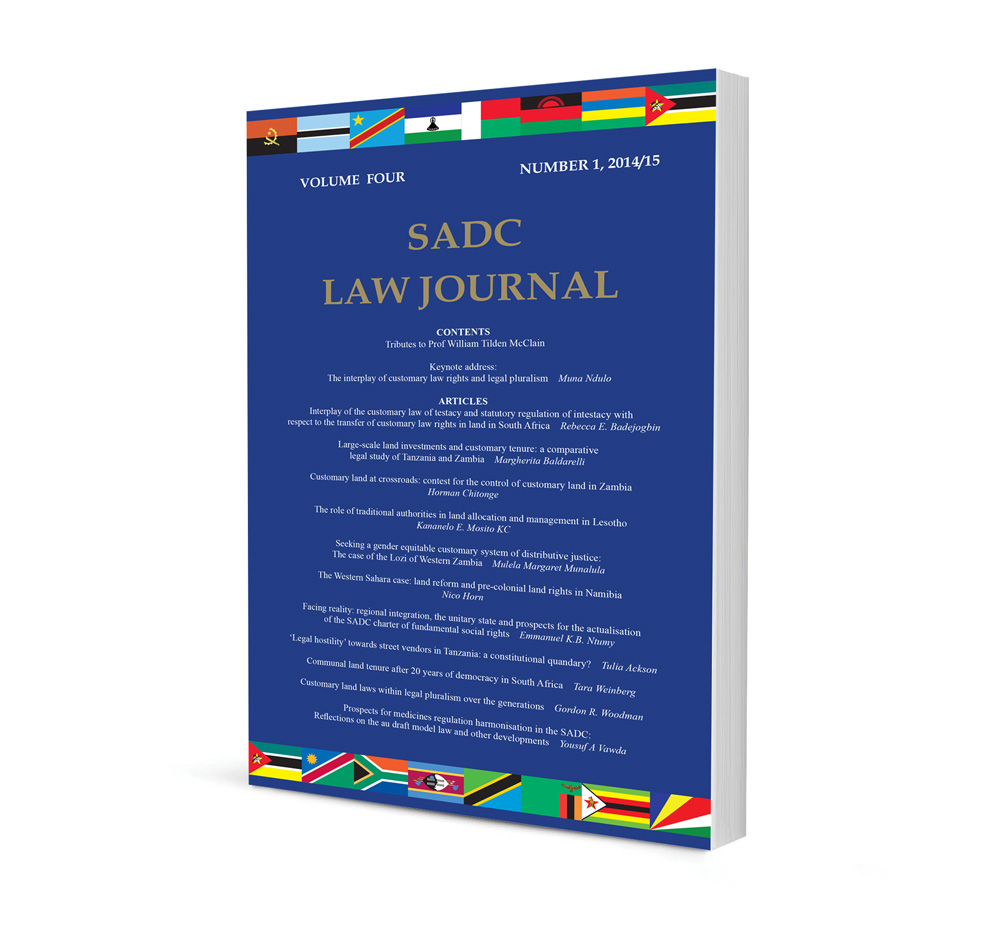
Facing reality: Regional integration, the unitary state and prospects for the actualisation of the SADC Charter of Fundamental Social Rights
Authors Emmanuel K.B. Ntumy
ISSN: 2026-8556
Affiliations: Senior Lecturer, Department of Law, University of Botswana
Source: SADC Law Journal, The, 2014/15, p. 110 – 143
Abstract
The transformation of the Southern African Co-ordination Conference (SADCC) into the Southern African Development Community (SADC) in 1992 heralded the birth of theories, theses and postulations about the benefits accruable via co-operation and regional integration. These were in addition to the variants of harmonisation suggested even in the face of diverse, implacable and therefore conflictual socio-political and economic policies of the component States. Included in this menu were commentaries on Economic Communities, Customs Unions, Common Market the European Economic Community, regional blocs such as the European Union and even the African Union. The multiplier effects of benefits amidst diversity and even the desirability of exploring the international environment for models, best practices and normative benchmarks were all actively advocated and robustly debated. Two decades later, the euphoria seems to have evaporated to be replaced by the realities of obsessive territoriality, clear historical and socio-economic disparities, symbolic overtures to regional integration, internal statist proclivities and emerging re-prioritisation of state-driven individualistic imperatives. These developments, to some, may appear natural, but to others however, their potentially deleterious effects on the general citizenry of the Southern African sub-region need closer observation. The question which is a logical corollary then becomes one of whether adequate preparatory work was done before this grand scheme was foisted on the gullible public. If so, why has the equally grand objective of socio-economic co-operation and integration become so elusive? The answer lies in a candid examination of the socio-political, economic and historical origins of the member states. This must be coupled with an evaluation of the perceptions and expectations that informed the inception of this intergovernmental organisation. To do this, the paper uses the Charter of Fundamental Social Rights as both an illustration and a measuring tool. The paper contends that the lofty ideals encapsulated in the Charter are out of tune with the demonstrated concerns of the members and the modalities they adopt in achieving their individualised objectives. This is with particular regard to labour formations and issues related to them. The paper thus asserts that should this trend continue, the SADC could well become a shifting mirage in the political, social and economic terrain of Southern Africa.